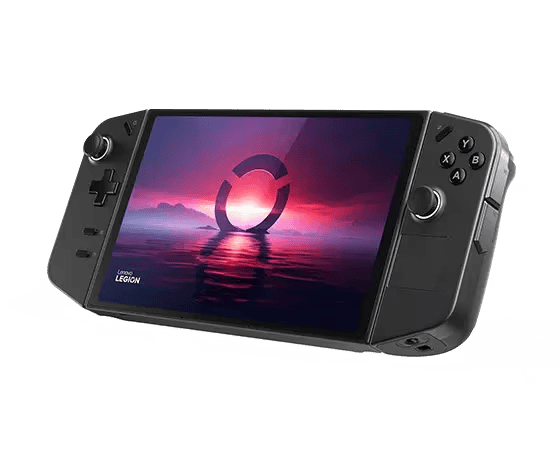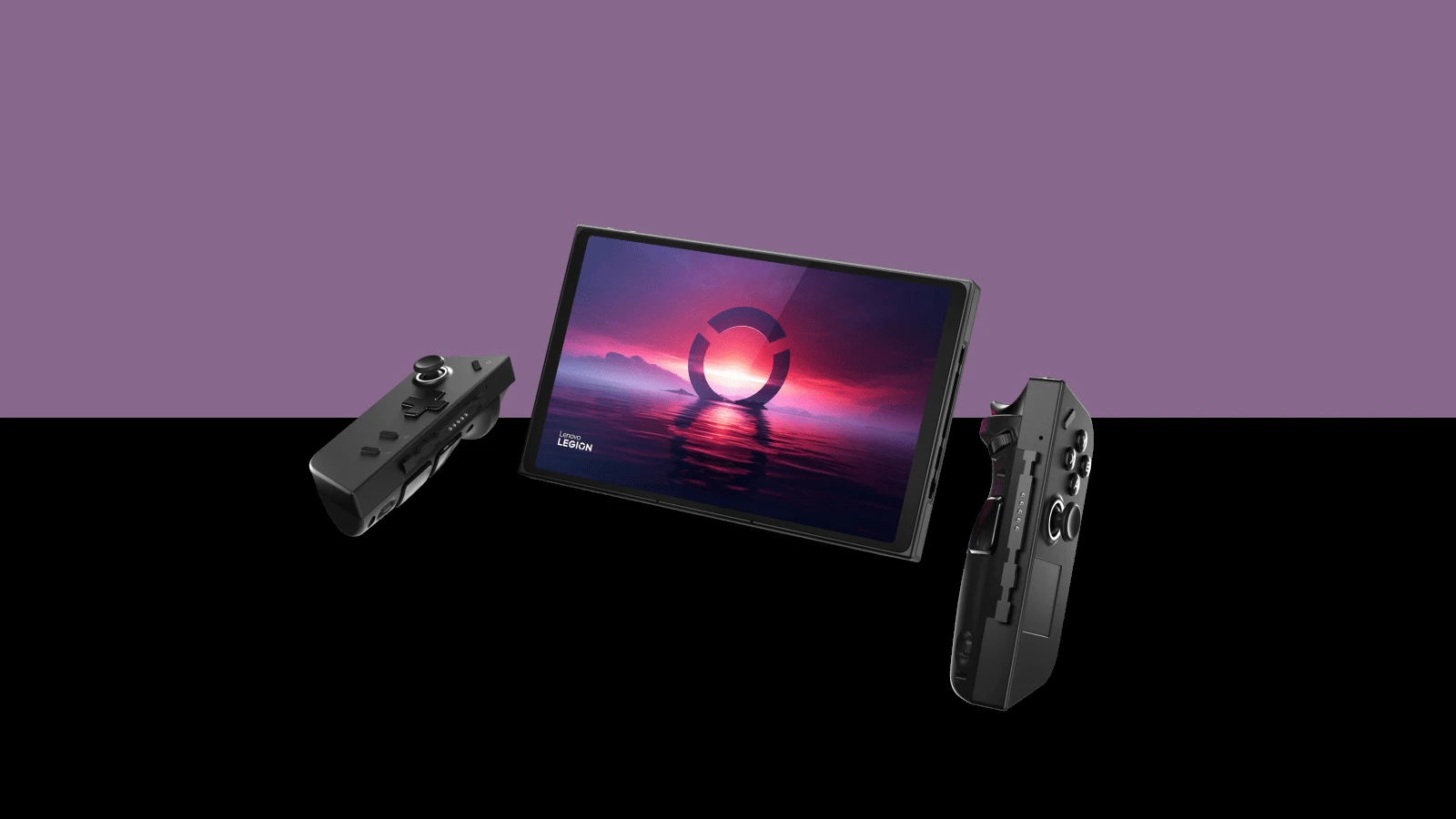Lenovo is poised to make waves in the handheld gaming market with its upcoming SteamOS-powered device. The company plans to unveil multiple new gaming consoles at the Consumer Electronics Show (CES) 2025, with one model expected to run on Valve’s Linux-based operating system. This move could position Lenovo as the first third-party manufacturer to release a handheld console featuring SteamOS, directly challenging Valve’s Steam Deck.
The Legion Go S is anticipated to be Lenovo’s flagship SteamOS device, with leaked images suggesting a design that could rival the Steam Deck. Alongside this model, Lenovo is expected to introduce an updated version of its original Legion Go, which gained popularity for its detachable gamepad design.
Lenovo’s entry into the SteamOS ecosystem marks a significant shift in the portable gaming landscape. By adopting Valve’s operating system, the company aims to tap into the growing market for handheld PC gaming devices while potentially offering unique features to differentiate itself from competitors.
Expanding the SteamOS Handheld Universe
Lenovo’s Entry into the Handheld Arena
Leaks and rumors suggest Lenovo is developing a new handheld PC designed to run SteamOS. This potential device, tentatively named the Lenovo Legion Go S, could become a direct competitor to Valve’s Steam Deck, expanding the options for gamers seeking portable PC gaming experiences. This development follows Valve’s recent decision to open up SteamOS to third-party hardware manufacturers.

Evidence of a SteamOS Device
Leaked images of the Lenovo Legion Go S have surfaced online, showcasing a sleek design potentially available in black and white. Most notably, the black variant appears to feature a dedicated Steam button. This strongly indicates the device will run on SteamOS, giving users direct access to their Steam libraries on the go.
Valve’s Changing Stance on SteamOS
Valve recently updated its branding guidelines to include “Powered by SteamOS” hardware. This signals a shift in strategy, confirming that Valve is now actively encouraging other companies to adopt its operating system for their own handheld devices. This move could significantly broaden the SteamOS ecosystem.
Potential Impact on the Handheld Market
Lenovo’s potential entry into the handheld market could have several important consequences. Increased competition could drive innovation in hardware design, features, and pricing. This could also lead to a wider variety of SteamOS devices, catering to diverse player preferences and budgets. Ultimately, this could fuel the growth of the entire handheld PC gaming sector.
A Comparison: Steam Deck vs. Potential Lenovo Handheld
| Feature | Steam Deck | Potential Lenovo Handheld |
|---|---|---|
| Operating System | SteamOS | Likely SteamOS |
| Manufacturer | Valve | Lenovo |
| Market Impact | First major SteamOS handheld, established the market | Potential competitor, could drive innovation |
Looking Ahead
While these reports are based on leaks and rumors, the evidence is compelling. Official announcements from Lenovo and Valve are anticipated for definitive confirmation. If these rumors prove true, Lenovo’s SteamOS handheld could reshape the landscape of portable PC gaming, offering players more choices and driving the market forward.
Key Takeaways
- Lenovo plans to launch multiple handheld gaming consoles at CES 2025
- The Legion Go S is expected to be the first third-party device running SteamOS
- Lenovo’s entry could reshape the portable gaming market and challenge existing players
Lenovo’s Entry into the SteamOS Handheld Gaming Market
Lenovo is preparing to launch a new handheld gaming device powered by SteamOS. This move marks the company’s significant step into a growing market segment, with plans to unveil multiple devices at CES 2025.
Launch of the Lenovo Legion Go S
Lenovo’s Legion Go S model is set to debut at CES 2025. This device will run on SteamOS, the Linux-based operating system used by Valve’s Steam Deck. The decision to use SteamOS aligns with recent updates to Valve’s branding guidelines, which now include “Powered by SteamOS” hardware.
Lenovo’s entry into this market comes at a time when handheld gaming PCs are gaining popularity. The company aims to capitalize on this trend by offering a device that combines portability with the vast library of games available on the Steam platform.
Design and Features of the Handheld Device
While specific details about the Legion Go S are limited, it’s expected to follow the general design principles of handheld gaming PCs. These typically include:
- A compact form factor for portability
- Built-in controls similar to traditional gaming controllers
- A high-resolution screen for immersive gaming experiences
- Powerful hardware to run modern games smoothly
The device will likely feature customized hardware optimized for gaming performance within a handheld form factor. This could include specialized cooling solutions and ergonomic designs for comfortable extended play sessions.
The Gaming Ecosystem of SteamOS
SteamOS offers several advantages for handheld gaming devices:
- Access to a vast library of PC games
- Regular updates and improvements from Valve
- Optimized performance for gaming on portable hardware
The Linux-based operating system provides a gaming-focused interface and supports features like cloud saves and in-home streaming. This ecosystem allows players to seamlessly transition between their handheld device and other gaming platforms.
By adopting SteamOS, Lenovo is tapping into an established platform with a dedicated user base. This strategy could help the Legion Go S quickly gain traction in the competitive handheld gaming market.
| Feature | Benefit |
|---|---|
| SteamOS | Access to large game library, optimized for gaming |
| Portability | Gaming on-the-go |
| PC Gaming Power | High-performance games in a handheld format |
| Steam Integration | Cloud saves, community features, game updates |
Technical Specifications and Market Positioning
Lenovo’s upcoming SteamOS handheld aims to deliver powerful performance and user-friendly features. The device incorporates advanced hardware and design elements to compete in the growing portable gaming market.
Power and Performance
The Lenovo Legion Go S is expected to feature the AMD Z2 Extreme chip, providing robust processing power for demanding games. This chip offers a balance of performance and energy efficiency, crucial for a handheld device.
The device may include an 8.8-inch IPS LCD touchscreen, offering a larger display than some competitors. This screen size could enhance gaming immersion while maintaining portability.
Battery life remains a key focus, with Lenovo likely optimizing power consumption to ensure extended gaming sessions.
Comparison with Competitors
| Feature | Lenovo Legion Go S | ROG Ally | Steam Deck |
|---|---|---|---|
| OS | SteamOS | Windows | SteamOS |
| Display | 8.8″ IPS LCD | 7″ 120Hz | 7″ LCD |
| Processor | AMD Z2 Extreme | AMD Z1 Extreme | Custom AMD APU |
| Controls | Detachable | Fixed | Fixed |
The Legion Go S stands out with its detachable gamepad design, offering flexibility in gaming setups. This feature differentiates it from fixed-control competitors like the ROG Ally and Steam Deck.
Lenovo’s choice of SteamOS aligns it closely with the Steam Deck, potentially offering similar game compatibility and user interface benefits.
Target Audience and Usability
The Legion Go S targets PC gaming enthusiasts seeking a portable solution. Its larger screen and detachable controllers cater to players who value versatility and comfort during extended gaming sessions.
Usability enhancements may include a protective cover with an integrated kickstand, allowing for tabletop gaming. The device could feature revised mouse buttons for improved navigation in desktop mode.
Lenovo’s multi-OS strategy, offering both Windows and SteamOS options across its handheld lineup, aims to accommodate diverse user preferences and gaming libraries.






